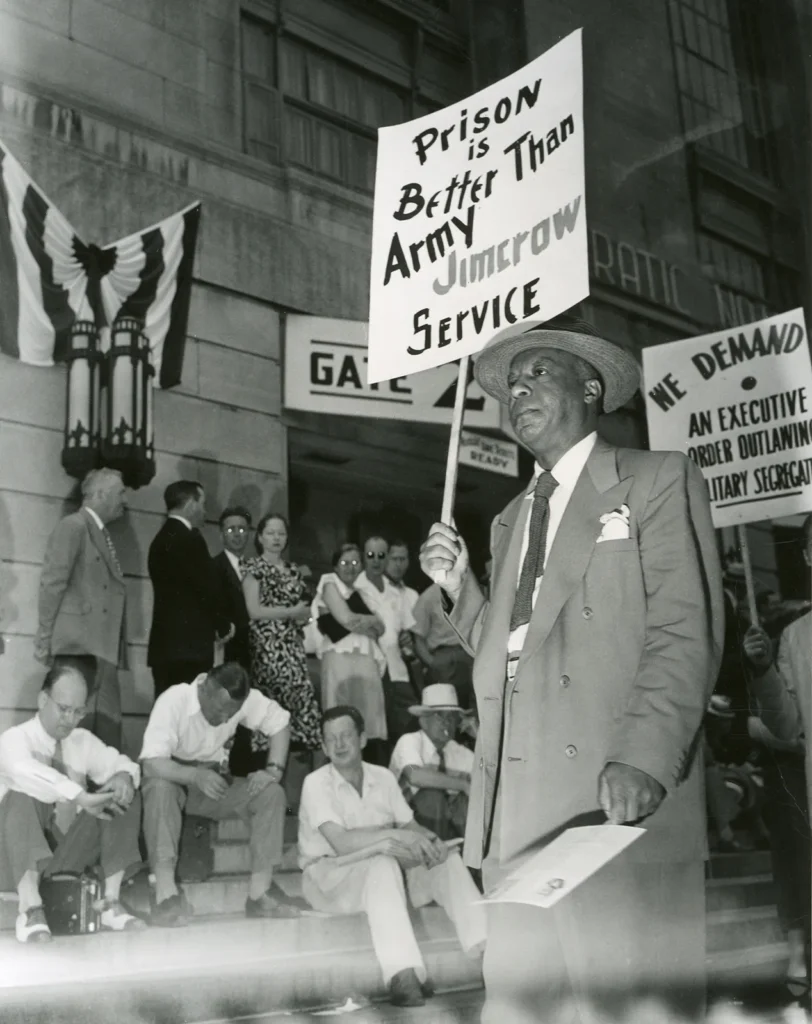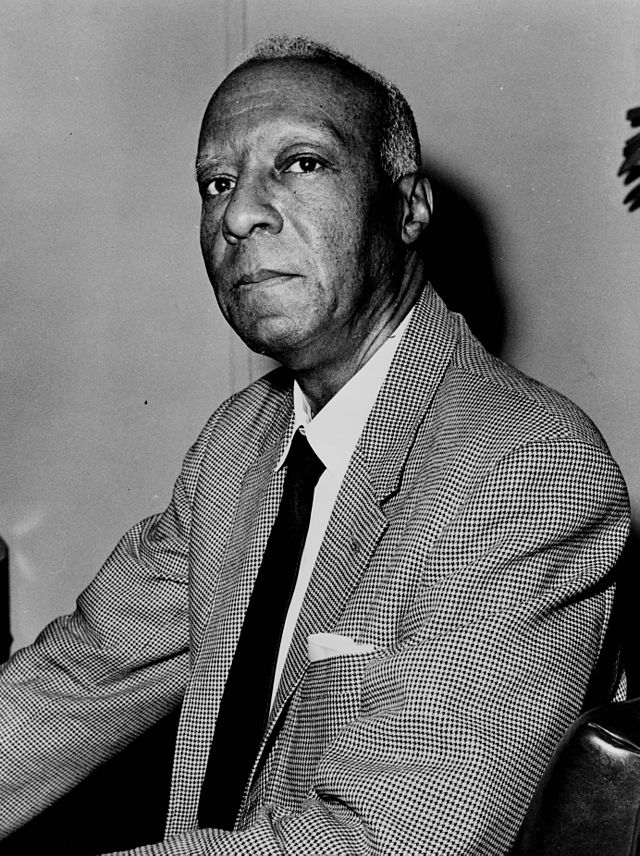|
Getting your Trinity Audio player ready...
|
Discover the inspiring story of A. Philip Randolph (1889-1979), a trailblazing African American activist who shaped the civil rights and labor movements in the United States. As the founder of the Brotherhood of Sleeping Car Porters, Randolph fought tirelessly for workers’ rights and racial equality17.
Key achievements:
- Founded the first successful African American-led labor union in 19251
- Pressured President Roosevelt to ban discrimination in defense industries during World War II2
- Convinced President Truman to desegregate the armed forces in 19482
- Organized the historic 1963 March on Washington, where Martin Luther King Jr. delivered his “I Have a Dream” speech1.
A. Philip Randolph’s Influence on Civil Rights Leaders

- Nonviolent protest tactics:
Randolph was a pioneer of nonviolent resistance in the civil rights movement, long before it became widely adopted. His approach emphasized peaceful demonstrations, boycotts, and civil disobedience as effective means of challenging racial injustice. This philosophy deeply influenced Martin Luther King Jr., who would later become the face of nonviolent protest in the 1950s and 1960s. King often credited Randolph as one of his mentors in the art of nonviolent resistance. - Mass demonstrations:
The March on Washington Movement, initiated by Randolph in 1941, set a precedent for using large-scale peaceful protests to effect change. Although this march was called off after President Roosevelt issued Executive Order 8802, the threat of the march itself demonstrated the power of organized mass action. This strategy would later be adopted and amplified by King and other civil rights leaders, culminating in events like the 1963 March on Washington for Jobs and Freedom. - Civil disobedience:
Randolph’s advocacy for civil disobedience, particularly in his campaign to end segregation in the armed forces, provided a blueprint for future civil rights activists. His willingness to confront unjust laws through peaceful resistance inspired King’s approach to civil disobedience, as exemplified in campaigns like the Montgomery Bus Boycott and the Birmingham Campaign. - Economic justice focus:
Randolph consistently emphasized the connection between racial equality and economic justice. This dual focus influenced King’s later work, particularly his Poor People’s Campaign. The 1963 March on Washington, which Randolph helped organize and where King delivered his famous “I Have a Dream” speech, explicitly linked civil rights with economic opportunity, reflecting Randolph’s long-standing approach. - Grassroots organizing:
Randolph’s success in organizing the Brotherhood of Sleeping Car Porters demonstrated the power of grassroots activism. This bottom-up approach to social change influenced King and other leaders to prioritize community organizing and local leadership development in their civil rights work. - Strategic alliances:
Randolph’s ability to build coalitions between labor unions, civil rights organizations, and other groups provided a model for future leaders. King would later adopt this approach, forming alliances with diverse groups to strengthen the civil rights movement. - Voter mobilization:
Randolph emphasized the importance of political participation and voter mobilization as tools for change. This strategy became a cornerstone of the civil rights movement under King’s leadership, with voter registration drives playing a crucial role in the struggle for equality. - Persistence and long-term vision:
Randolph’s career spanned decades, demonstrating the importance of persistence in the face of setbacks. This long-term commitment to the cause inspired King and others to view the civil rights struggle as a marathon rather than a sprint. - Intersectionality of struggles:
Randolph’s work bridged the gap between labor rights and civil rights, highlighting the interconnected nature of various social justice struggles. This perspective influenced King’s later emphasis on addressing poverty and economic inequality alongside racial discrimination. - Dignity and respectability:
A. Philip Randolph’s emphasis on maintaining dignity and respectability in the face of oppression influenced the image and tactics of the civil rights movement. King and other leaders adopted this approach, using their appearance and conduct to challenge stereotypes and win public sympathy.
In conclusion, A. Philip Randolph’s strategies and philosophies laid much of the groundwork for the civil rights movement that would flourish under leaders like Martin Luther King Jr. His emphasis on nonviolent resistance, economic justice, grassroots organizing, and strategic alliances shaped the tactics and goals of the movement for decades to come. Randolph’s influence extended beyond King to impact a generation of civil rights leaders, making him a crucial figure in t


